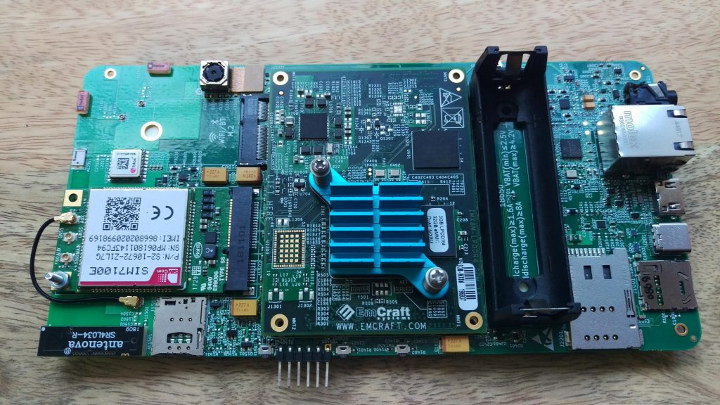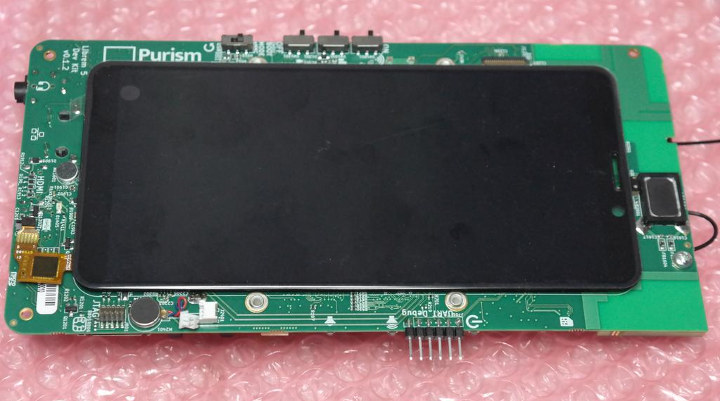Purism Librem 5 is a privacy-focused open source Linux smartphone powered by NXP i.MX 8M processor that was launched via a crowdfunding campaign in August 2017 that ends up being extremely popular with over 1.5 million dollars raised.
At the time, the phone was scheduled to ship on January 2019, but a $299 development kit with board, display and accessories was slated to ship in June 2018. There have been some delays, but the good news is that Librem 5 development kits are now shipping so third party software development for the phone will now really get started.

Librem 5 development kit preliminary specifications:
- System-on-Module – Emcraft SOM-IMX8M module with NXP i.MX 8M Quad core Cortex A53 processor, at least 2GB LPDDR4 RAM and 16GB eMMC flash (I could not find exact RAM and storage capacities for the module used in the board)
- Display – 5.7″ LCD touchscreen with a 18:9 (2:1) 720×1440 resolution
- Camera – 1x camera module
- Librem 5 devkit carrier board
- Storage – micro SD card slot
- Video Output – Mini HDMI connector for second screen
- Audio
- Integrated mini speaker and microphone
- 3.5mm audio jack with stereo output and microphone input
- Network Connectivity
- M.2 low power WiFi & Bluetooth card
- SIM7100E M.2 cellular baseband card for 3G and 4G networks + slot for SIM card
- Ethernet for debugging and data transfer
- Location – GNSS with GPS support
- USB – 1x USB-C connector for USB data (host and client) and power supply
- Sensors – Inertial 9-axis IMU sensor (accel, gyro, magnetometer), Ambient light sensor, Proximity sensor
- Misc – Vibration motor, slot for smartcard, radio and camera/mic hardware killswitches
- Power Supply – Via USB-C or optional 18650 Li-poly rechargeable battery with charging from mainboard
The company has setup a Matrix channel for backers of Librem 5 developer kit to help them communicate with Purism engineering team and work with the community at large. If you don’t own the board, but are still interested in getting involved, you can ask to be added to the group by sending an email to [email protected]. Work-in-progress documentation can also be found in the developer site.
The phones themselves are now expected to ship in about four months, in April 2019. Early-bird pre-order pricing at $599 will end on January 7th, and price will be increased to $699 afterwards.

Jean-Luc started CNX Software in 2010 as a part-time endeavor, before quitting his job as a software engineering manager, and starting to write daily news, and reviews full time later in 2011.
Support CNX Software! Donate via cryptocurrencies, become a Patron on Patreon, or purchase goods on Amazon or Aliexpress





